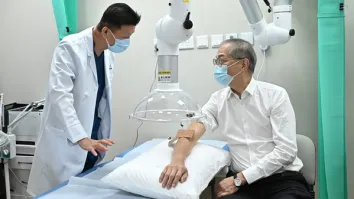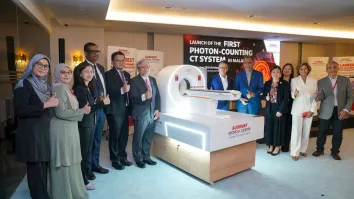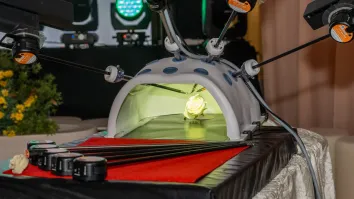
Singapore scientists further unravel ALS mystery in groundbreaking new work
It will drive future work to significantly slow down the disease.
After a grueling five-year study, a team of scientists from the National University of Singapore (NUS) have discovered a new link in the mechanism of Amyotrophic Lateral Sclerosis (ALS).
A study, led by Dr. Ling Shuo-Chien of NUS Medicine, revealed that neighbouring cells known as oligodendrocytes also participate in the spread of the disease. Prior to the study, it was widely believed that ALS only affected motor nerve cells.
This will help scientists better understand ALS, leading to the possibility of an eventual treatment for the condition. Healthcare Asia spoke with Dr. Ling to better understand the nuances of her study.
Healthcare Asia: Please share in brief the findings of your study. What were the challenges that you encountered?
Dr. Ling: TDP-43 is the defining pathological hallmark protein for two overlapping adult-onset neurodegenerative diseases, amyotrophic lateral sclerosis (ALS) and frontotemporal dementia (FTD). TDP-43 proteinopathies are also found in other major neurodegenerative diseases, such as Alzheimer’s disease, further highlighting the pivotal role of TDP-43 in the nervous system. Curiously, TDP-43 aggregates are also found in oligodendrocytes, which provide myelination and metabolic support for the neurons.
Here, we show, for the first time, that TDP-43 is indispensable, in a cell-autonomous manner, for the proper functioning of mature oligodendrocytes, in particular, myelination and cell survival. Specifically, TDP-43 depletion leads to RIPK1-mediated necroptosis of mature oligodendrocytes and down-regulation of myelin proteins that are essential for myelination, but exerts no apparent toxicity on motor neurons.
Healthcare Asia: How can patients and hospitals leverage from the findings?
Dr. Ling: Given the prevalence of TDP-43 proteinopathies in ALS/FTD, AD and aged brains, boosting oligodendrocyte function may be considered as an additional therapeutic intervention for ALS/FTD, AD and age-related cognitive decline. It is worth noting that anterior white matter is preferentially vulnerable to degradation in aging and white matter integrity correlated negatively with cognitive decline associated with aging and AD.
Furthermore, FTD patients with a risk variant in the MOBP gene (myelin-associated oligodendrocyte basic protein) showed more severe white matter degeneration with shorter disease duration. Critically, recent genome-wide association analyses also identified MOBP as a risk factor for ALS. Thus, given the prevalence of TDP-43 proteinopathies in ALS/FTD, AD and aged brains, boosting oligodendrocyte function may be considered as an additional therapeutic intervention for ALS/FTD, AD and age-related cognitive decline.
Healthcare Asia: What is the current data on ALS across Asia and which countries stand best to leverage in this new information from your study?
Dr. Ling: The prevalence of ALS in Asia is similar to those in the US and Europe, which is about 5 per 100,000 people per year (incident should be about 1-2 per 100,000 people per year). Since ALS is an adult-onset neurodegenerative disease, the projection of ALS cases will increase by 70% by 2040.
Healthcare Asia: Can you share why there was a particular interest in ALS?
Dr. Ling: ALS is a fast-progressing and lethal neurodegenerative disease that typically kill patients within 1-5 years of diagnosis. Unfortunately, the approved FDA medicine could only extend the life span for a few months. Given the prevalence of TDP-43 proteinopathies in ALS/FTD, AD and aged brains, boosting oligodendrocyte function may be considered as an additional therapeutic intervention for ALS/FTD, AD and age-related cognitive decline.
Healthcare Asia: Moving forward, how can key players in the healthcare scene utilise the findings of this study in providing a cure from ALS?
Dr. Ling: As mentioned, given the prevalence of TDP-43 proteinopathies in ALS/FTD, AD and aged brains, boosting oligodendrocyte function may be considered as an additional therapeutic intervention for ALS/FTD, AD and age-related cognitive decline.



















 Advertise
Advertise








